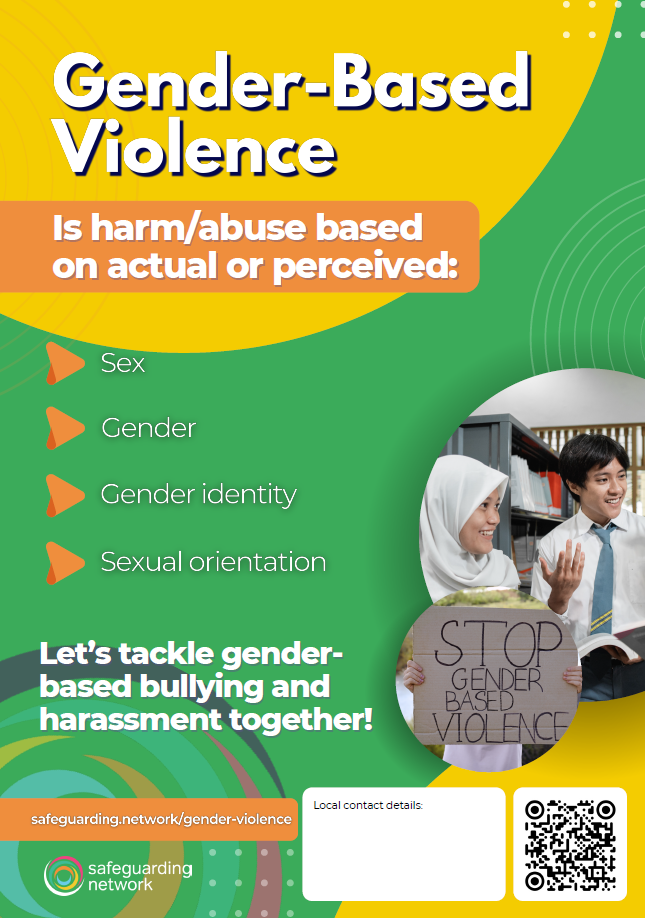Introduction
Whilst gender-based violence is mainly aimed at women and girls, there are also instances affecting men and those with non-binary and other gender identities. There is significant under-reporting of domestic and sexual abuse/violence against boys and men, possibly due to gender stereotyping and societal attitudes.
The impact of gender-based abuse on children can be severe and long-lasting, affecting their mental and physical health, education and overall well-being. To break the cycle of gender-based abuse, it is crucial to provide support and resources for both children and adults.
Need more?
Thank you for visiting our resources pages. These are free to everyone as is our fortnightly safeguarding bulletin – general safeguarding information is too important to restrict. Become a member to access lots more, including training materials for you to deliver in-house on each topic in Keeping Children Safe in Education.
Sign up for FREE fortnightly bulletin.
What about training?
We can deliver training for your setting on this and other subjects via online platforms, or face-to-face in certain areas. Just get in touch to discuss your requirements.
Gender-based violence includes:
- violence against women and girls (VAWG);
- violence against men (VAM);
- violence against those who identify as non-binary or other genders;
- domestic abuse based on gender;
- sexual violence – rape, forced sexual acts, etc.;
- forced pregnancy, abortion or sterilisation;
- ‘honour’-based abuse including female genital mutilation, forced circumcision, forced marriage, child marriage;
- psychological violence – threats, isolation, emotional abuse;
- sexual harassment, including public sexual harassment by those unknown to the victim;
- exorcism due to gender, gender identity, sexuality.
Definition of gender-based violence
Gender-based violence refers to any type of harm that is perpetrated against a person or group of people because of their factual or perceived sex, gender, sexual orientation and/or gender identity. It is based on an imbalance of power and is carried out with the intention to humiliate and make a person or group of people feel inferior and/or subordinate. This type of violence is deeply rooted in the social and cultural structures, norms and values that govern society, and is often perpetuated by a culture of denial and silence. Gender-based violence can happen in both the private and public spheres, and it affects women and girls disproportionately.
Adapted from: Council of Europe, Gender Matters
Statistics
- According to the National Police Chief’s Council, 3,000 cases of violence against women are recorded every day, and at least 1 in every 12 women will be a victim per year.
- Figures from the Office for National Statistics suggest that 1-in-3 victims of domestic abuse are male.
- Stonewall says hate crimes based on sexual orientation and transgender identity have increased by 112% in the last 5 years and are the most likely to involve violence or threats of violence.
- 59% of 13-21-year-old girls have seen or experienced sexual harassment., and 47% of 11-21-year-olds girls feel less safe because of sexism and misogyny, (Girls' Attitudes Survey 2024, Girlguiding).
It isn’t surprising that sexism is a part of most girls’ lives, but it’s saddening to see. Girls see this discrimination all around, whether it be virtually, in education, or in public. The widespread nature of sexism in our society is unacceptable, and girls shouldn’t be growing up experiencing this as the norm. All people deserve to feel safe wherever they are, and girls’ safety should be a top priority…
Spot the signs
Possible signs of gender-based violence include;
- aggression;
- non-compliance at school;
- difficulty concentrating;
- difficulty developing relationships;
- reduction in attendance and/or attainment;
- eating disorders;
- poor self-esteem, depression or anxiety;
- self-harm;
- substance misuse.
What to do
Create a culture based on equality and informed choice. Settings are well placed to help by:
- promoting equality;
- avoiding stereotyping and dispelling societal gender stereotypes;
- embracing difference;
- demonstrating tolerance;
- promoting equality of opportunity across the curriculum;
- tackling any gender bias-based language and/or assumptions;
- addressing gender-based bullying and harassment swiftly.
Check children and young people have safe relationships – in their family, with their peers and with your staff. Create a culture where it’s okay to talk even about the most difficult things.
Know the signs and know what to do – use the checklists above, your safeguarding procedures and be confident in raising gender-based violence as a possibility. Remember, although the highest proportion of GBV is against women and girls, boys and men also suffer.
Take action – and keep taking action until you know children and young people are safe.
Free gender-based violence poster
This free, downloadable resource raises the profile of safeguarding for your staff team. For use in staff rooms, on safeguarding boards or on the back of toilet doors, the poster includes tips, a space for local contact details, plus a link and QR codes to this resource page. Download the poster from the resources below.
DSL Training Materials
-

Gender-based Violence Presentation
-

Gender-based Violence - Presenter Notes
-

Handout for staff - Gender-based Violence
-

Gender-based violence quiz
-

Gender-based violence quiz (answer sheet)
-

Gender-based Abuse Scenario – Early years settings
-

Gender-based Abuse Scenario – Early Years settings – DSL Information Sheet
-

Gender-based abuse scenario (primary schools)
-

Gender-based abuse scenario (primary schools) – DSL information sheet
-

Gender-based abuse scenario (secondary schools)
-

Gender-based abuse scenario (secondary schools) – DSL information sheet
-

Gender-based abuse scenario – 16+ settings
-

Gender-based abuse scenario – 16+ settings – DSL Information Sheet
-

Gender-based abuse scenario – SEND Settings
-

Gender-based abuse scenario – SEND Settings – DSL Information Sheet
-

Gender-based abuse scenario – care settings
-

Gender-based abuse scenario – Care settings – DSL Information Sheet
Resources
-

Gender-based violence poster
-

What does gender equality mean to your pupils?
-

Addressing toxic masculinity, misogyny and social media influence
-

Homophobic, biphobic and transphobic bullying
Save time and improve your safeguarding approach…
Bite-size training materials to share with your staff every month.
Support to explore and develop your safeguarding culture.
A huge array of resources and professional experience at your fingertips.
Get in touch now for a personal tour of the site and details of membership benefits.
We look forward to working with you.


